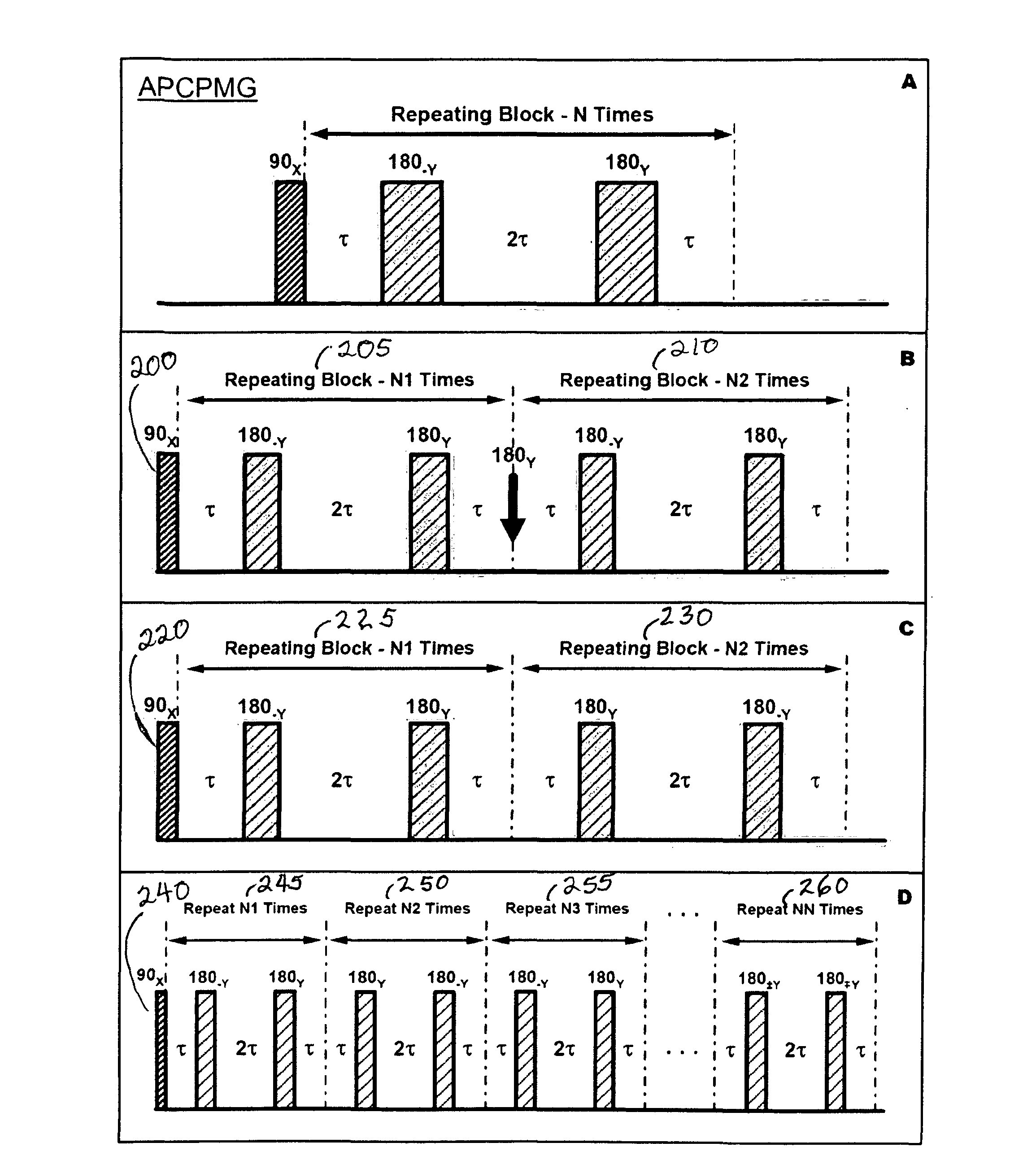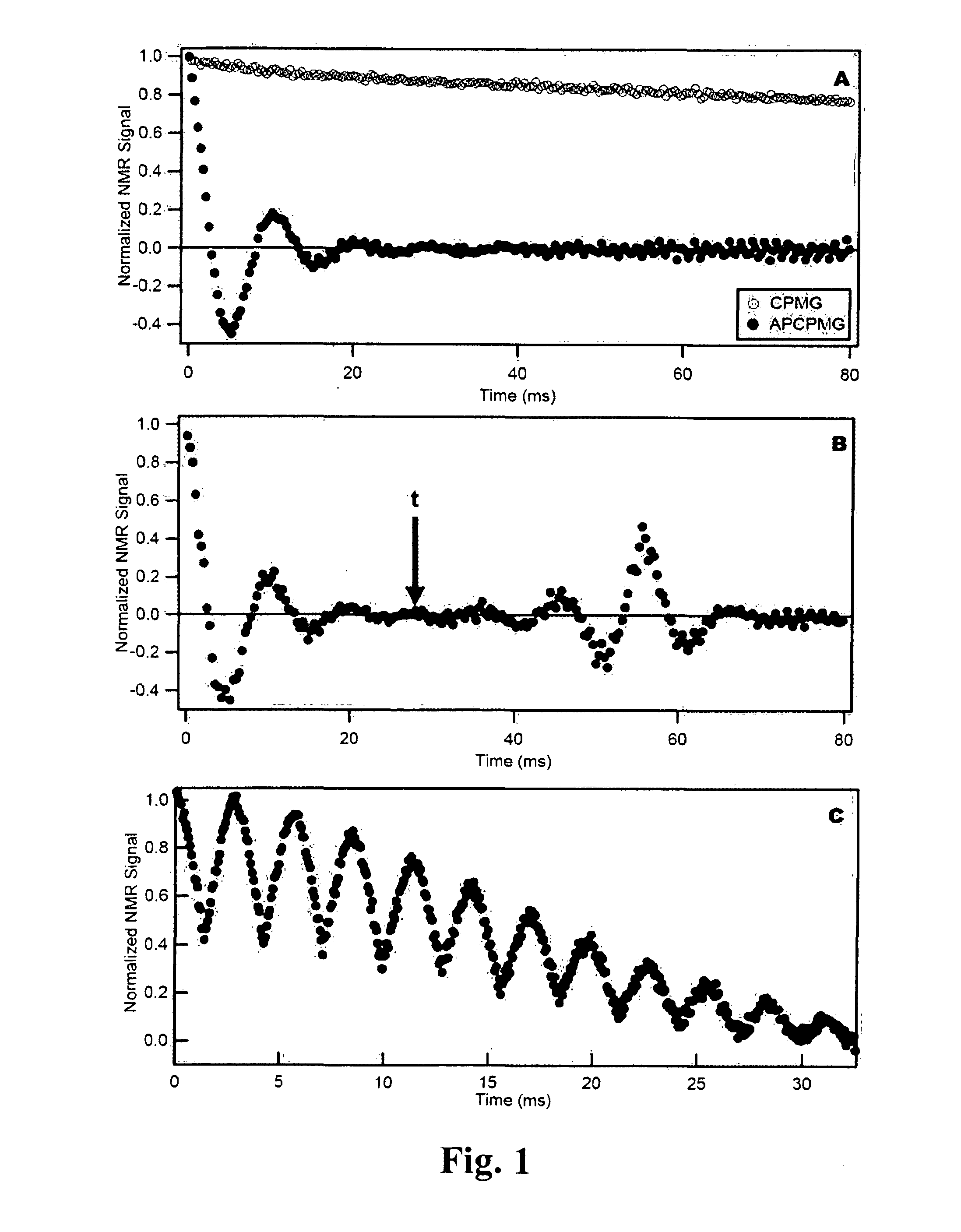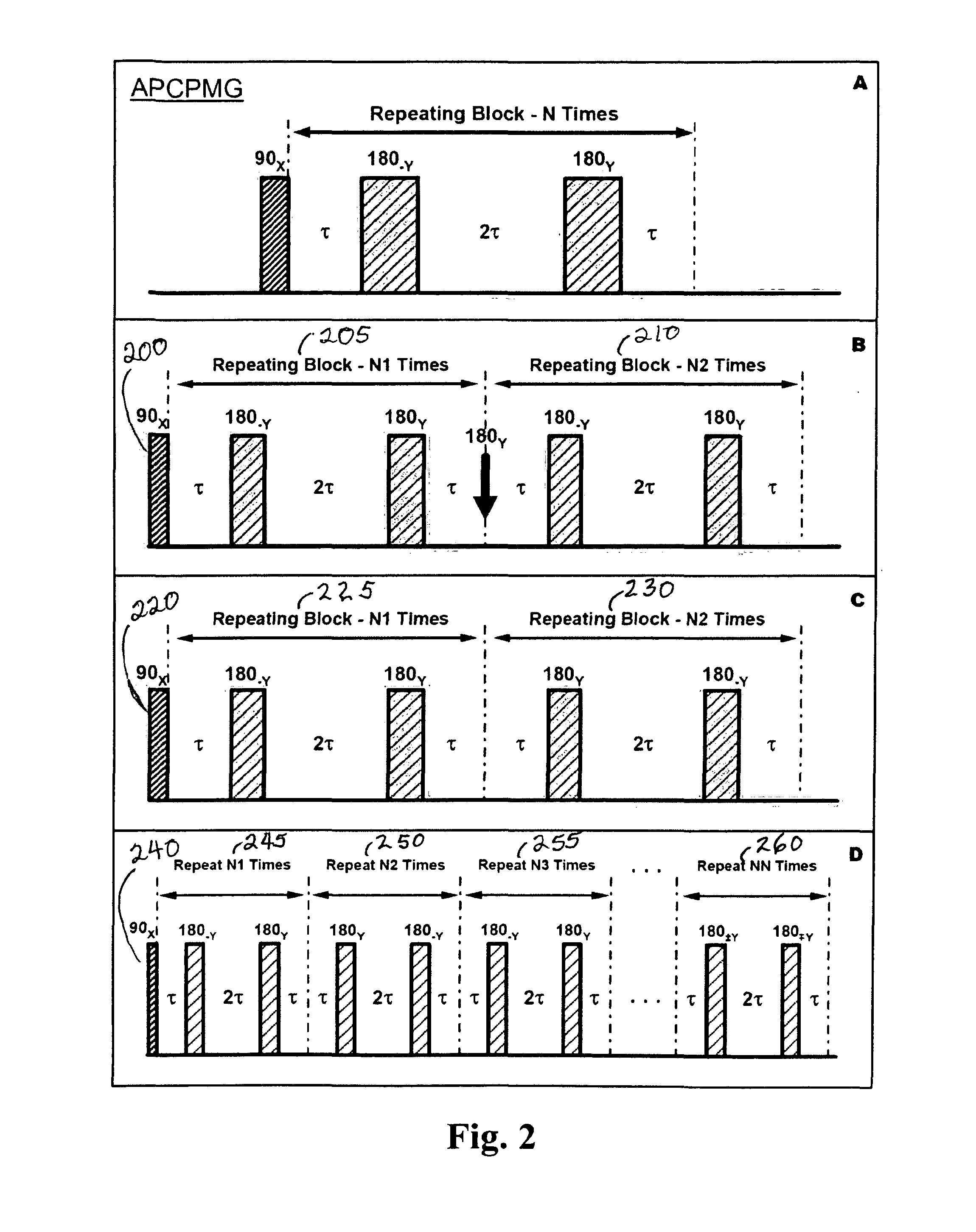System and Methods for Manipulating Coherence of Spins and Pseudospins Using the Internal Structure of Strong Control Pulses
a magnetic resonance signal and coherence technology, applied in the field of systems and methods for controlling coherence of magnetic resonance signals of spin species, can solve the problems of affecting the signal to noise ratio and the spatial resolution of the mri/mrm of solids, unable to achieve the effect of obtaining nmr signals from liquid pulse sequences, and failing to achieve the effect of solid sample application,
- Summary
- Abstract
- Description
- Claims
- Application Information
AI Technical Summary
Benefits of technology
Problems solved by technology
Method used
Image
Examples
Embodiment Construction
[0248]Systems and methods for controlling the coherence of a magnetic resonance signal of a sample comprising a plurality of spin species are provided. The present invention is applicable to a system of spin species having integer or half-integer spin.
[0249]To analyze the magnetic resonance signal of the spin species of a sample, the sample is generally placed in an external magnetic field in what is taken to be the positive z-direction in a Cartesian coordinate system in the laboratory reference frame. The external magnetic field causes the net magnetization of the spin species to align along the positive z-axis, and the spin species to precess about the z-axis at the Larmor frequency in the laboratory frame of reference. It is often convenient to consider the system of spins in terms of a reference frame which rotates about the z-axis at the Larmor frequency (i.e., the rotating reference frame). In a magnetic resonance measurement, one or more radio-frequency (rf) pulses having a ...
PUM
 Login to View More
Login to View More Abstract
Description
Claims
Application Information
 Login to View More
Login to View More - R&D
- Intellectual Property
- Life Sciences
- Materials
- Tech Scout
- Unparalleled Data Quality
- Higher Quality Content
- 60% Fewer Hallucinations
Browse by: Latest US Patents, China's latest patents, Technical Efficacy Thesaurus, Application Domain, Technology Topic, Popular Technical Reports.
© 2025 PatSnap. All rights reserved.Legal|Privacy policy|Modern Slavery Act Transparency Statement|Sitemap|About US| Contact US: help@patsnap.com



